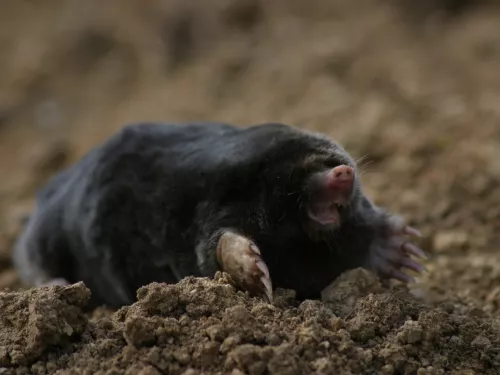Minke whale
The UK's smallest whale, the minke whale, is notoriously inquisitive around boats and is even known to breach clear of the water. Beware though - their fragrant breath has given them the nickname Stinky Minkes!
The UK's smallest whale, the minke whale, is notoriously inquisitive around boats and is even known to breach clear of the water. Beware though - their fragrant breath has given them the nickname Stinky Minkes!
A common and diminutive fish, the minnow can be found in freshwater streams, rivers and lakes across the country. Look out for the dark stripe along its flank and the red bellies of the males.
So-named for its three bull-like horns, the Minotaur beetle is a large dung beetle found on grassland and heathland from the autumn. Adults drag dung back to their nests for their larvae to feed on.
A small, day-flying moth that can often be seen visiting garden herbs.
The mistle thrush likely got its name from its love of mistletoe - it will defend a berry-laden tree with extreme ferocity! It is larger and paler than the similar song thrush, standing upright and bold.
Kissing under the mistletoe is a much-loved Christmas tradition, making this plant familiar to us all. It actually grows as a parasite on trees - look for it hanging off branches in large balls during winter.

This stocky, brown mammal spends its life burrowing underground with its spade-like paws, hunting for earthworms to eat.
The Monkey-puzzle tree is unmistakeable with its pyramidal shape, jutting branches and stiff, dark green 'spines' (its leaves). Widely planted in the UK's parks and gardens, it is threatened globally.
A small fish found on rocky shores in the south and west of Britain.
Although, commonly referred to as a ‘sea snail,’ this species in fact belongs to the fish family!

The moon jelly is the most common jellyfish in UK seas, often washing up on our beaches. No need to worry though - it doesn't sting humans.
A familiar black bird of our lakes, ponds and rivers, the moorhen is widespread; look out for its large and untidy-looking nest on the water in spring. It can be distinguished from the similar coot by its yellow legs, red beak and the white patches on its body.